SANTA BARBARA (Day 6 - part 2)
Our next stop was the county courthouse. Completed in 1929, It's a beautiful example of Spanish Colonial Revival. It replaced a previous building from 1872 which was badly damaged in an earthquake in 1925. The gardens contain palms and trees from over 25 countries.


The inscription reads: Dios nos dio los campos. El arte humana edificó ciudades. (God gave us the fields. Human art built cities.) - by Marcus Terentius Varro (Roman scholar, 116–27 BC)


We went inside and took an elevator up to the top of the 85-foot tall clock tower, known as El Mirador (or lookout).


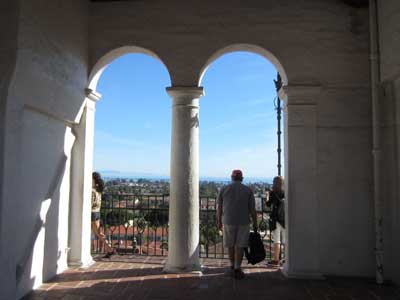


Click for a larger image

Click for a larger image
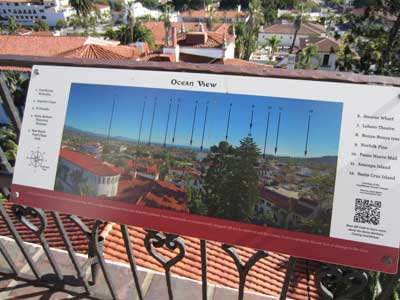



The mission .... the wharf
We took the stairs back down.


Unfortunately the exhibit room with the old clock was closed.
We popped into the stateroom (now known as the Mural Room) which was covered with amazing murals depicting Santa Barbara's history. This was the work of Daniel Sayre Groesbeck (1879-1950). It took four months to complete.




"1846 Fremont descends San Marcos Pass" - The arrival of John C. Fremont marked the beginning of American rule.


"1822 California under Mexico visualized another change in sovereignity"
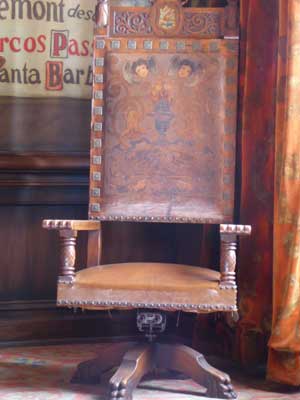


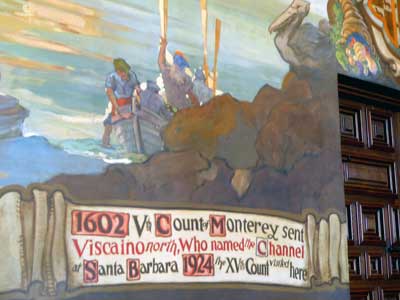
"1602 Vth Count of Monterey sent Viscaino north, who named the channel at Santa Barbara. 1924 the XVth Count visited here."
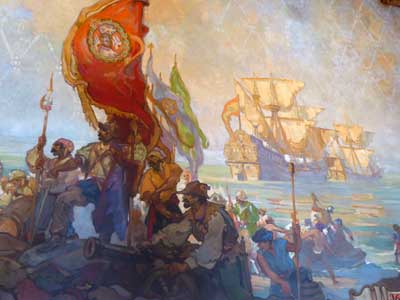

"1542 Fifty years after Columbus Juan Rodriquez Cabrillo landed at Las Canoas with the flag of Spain"... his ships: the San Diego (flagship), the San Tomás and the Tres Reyes



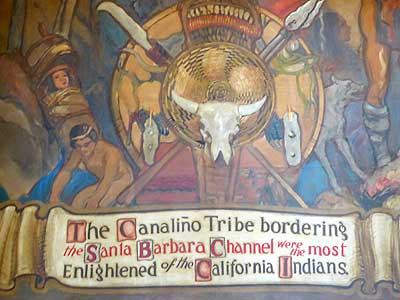
The Canalino tribe bordering the Santa Barbara Channel were the most enlightened of the California Indians." Wow, there's just all kinds of wrong with that one nowadays!



The first California flag (the Lone Star flag), created in 1836 during a coup to break free from Mexico, was just the red star (sometimes made using blackberry juice!). The grizzly bear was added in 1846 for the Bear Flag Revolt in Sonoma, again in rebellion to Mexico. The bear was a symbol of strength and unyielding resistance.
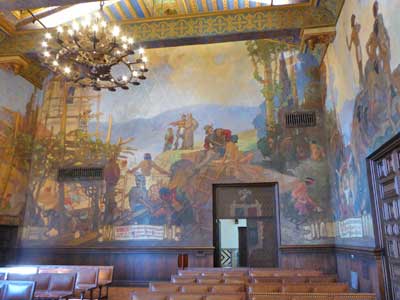

The back wall

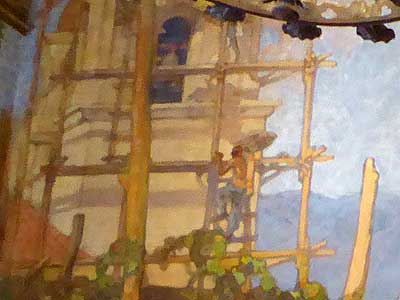
"1786 Fr Presidente Fermin Lasuen builds the Xth Mission of Santa Barbara after the death of Fr Junipreo Serra of Carmel"

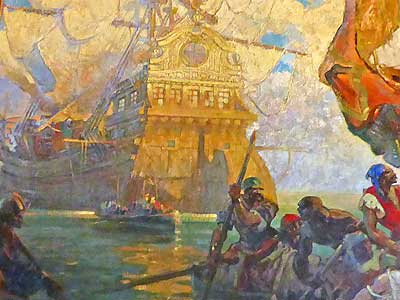
The Landing of Cabrillo in 1542, originally painted for the County National Bank
return • continue

